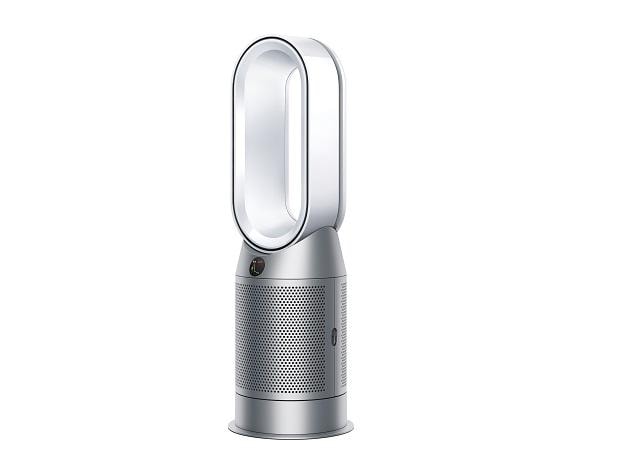Air pollution has become a recurring menace in India, especially in northern states such as Delhi. The capital city is witnessing worse air quality this year, compared to previous years. Contrary to general belief, air pollution is not limited to outdoors. Indoor air pollution is a larger cause of concern because people spend majority of their daily hours in confined spaces such as offices, co-working spaces, homes, etc. Therefore, air purifiers have become a must to breathe clean air in indoor spaces. Below are a few things to check while buying the air purifier for indoor use:
Room size and CADR
‘One size fits all’ does not work when it comes to indoor air purifiers. Therefore, it is necessary to have a basic understanding of the place where you plan to install the air purifier. The first step is to measure the size of the room. It is important because purifiers differ based on coverage area. It is always advisable to opt for a purifier that covers an area that exceeds the size of the room.
Clean Air Delivery Rate (CADR) is the metric to measure the performance of the air purifier. It essentially means how quickly the air purifier cleans the air of an area while working at full speed. Higher the CADR value, better the air purification. Therefore, choose a device with a higher CADR for more efficient air filtration, if you have a bigger room.
Like CADR, there is another metric named POLAR used by select brands such as Dyson. It is a method which tests the working of an air purifier in real living spaces. The test ensures that the purifier mixes and circulates the clean air around the whole room, senses pollution automatically, and captures gases and ultrafine particles.
Air change rate
Air change rate measures the efficiency of the air purifier. It refers to the number of times an air purifier can clean the air of the entire room in an hour. A purifier with a 5 ACH (air change rate per hour) means it will clean the air five times in an hour. It is advisable to go for an air purifier with 5-6 ACH rating for air cleaning.
Filter Types
Air purifiers come with several filters, and the three-stage filtration system is the most common. In the three-stage filtration system, the air passes pre-filter, HEPA, and finally through an activated charcoal filter. Each of these filters play a significant role in cleaning the air.
Pre-filter removes large particles, pet hair etc. before the air passes through other filters. This filter needs to be cleaned or changed regularly. They are less expensive and help in extending the life of other filters.
HEPA filters eliminate several microscopic pollutants like pollen, dust, mould, bacteria and pet dander. It can capture up to 99.97 per cent of particles as small as 0.3 microns.
Activated carbon filters are usually used with HEPA filters as they can remove food and chemical odours, kitchen smoke, and absorb vapours.
Besides these common filters, there are more like UV and PCO filters. These are, however, not common. UV filters ensure infection-free and sterile air. They are often installed in hospitals, restaurants, laboratories, and childcare institutions to lessen the risk of airborne sickness. Photo-catalytic Oxidation Filters (PCO Filter) are used with UV filters to eliminate microorganisms.
Smart connectivity features
Smart air purifiers come with features like air quality monitoring, Wi-Fi connectivity, and a programmable timer. Air quality sensors give real time updates on the quality of indoor air. They can automatically turn on and off, and adjust the speed of the fan based on air quality conditions of the room.
Go for Wi-Fi enabled air purifiers because these can be controlled from a distance via a smartphone. Wi-Fi also lets users control their air purifier via Alexa and Google Assistant. Through a programmable timer, users can set timing on the purifier to run during specific periods of the day or night.
Maintenance cost
An individual should consider after sales service while buying an air purifier. As the filters need to be cleaned and replaced regularly, you should consider the price of replacement of filters too. Activated carbon filter needs to be replaced once in three months and HEPA filter once in a year. Filter cost varies from brand-to-brand. You can also look for CARB, AHAM, Energy Star, UL and other air purifier certifications.
Note:- (Not all news on the site expresses the point of view of the site, but we transmit this news automatically and translate it through programmatic technology on the site and not from a human editor. The content is auto-generated from a syndicated feed.))




Thank you for this I enjoyed reading. Will share
on my social media profiles 🙂
First of all I want to say awesome blog! I had a quick question in which I’d like
to ask if you do not mind. I was curious to find out how you center yourself and clear your
head before writing. I’ve had trouble clearing my mind in getting my ideas out.
I do take pleasure in writing however it just seems like
the first 10 to 15 minutes are generally lost just trying to figure out how to begin.
Any recommendations or tips? Kudos!
I every time emailed this web site post page to all my friends, for the reason that if like to read it after that my friends
will too.
I read this post fully regarding the comparison of hottest and previous technologies,
it’s awesome article.
Today, while I was at work, my cousin stole my iPad and tested to see if it can survive a
twenty five foot drop, just so she can be a youtube sensation. My iPad is now
broken and she has 83 views. I know this is entirely off
topic but I had to share it with someone!
Thanks for the auspicious writeup. It actually was a amusement account it.
Glance advanced to more added agreeable from you! However, how can we keep up a correspondence?